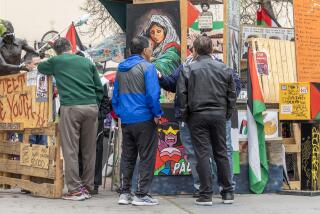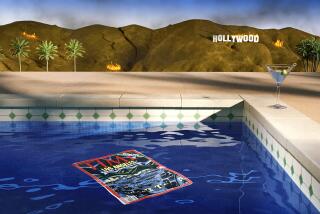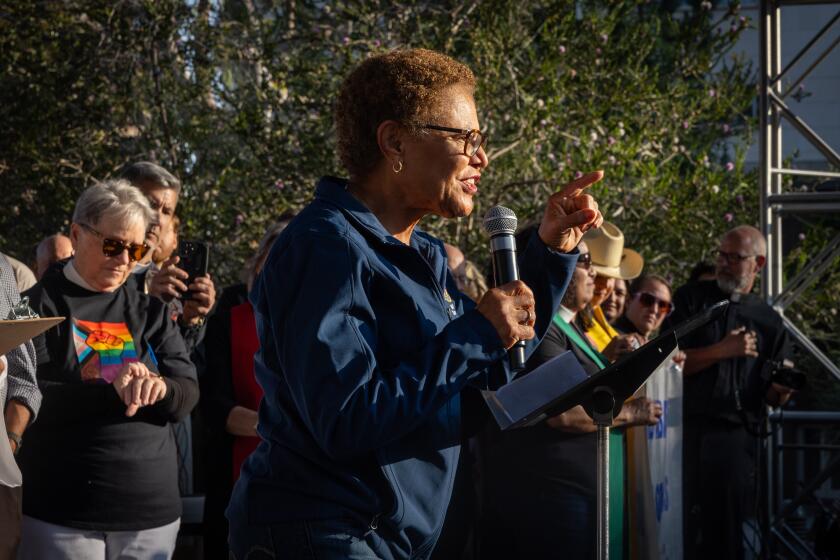35 Years Later, Protesters Say It Again
- Share via
About 300 demonstrators marched through the streets of Los Angeles and rallied at Salazar Park on Saturday for two reasons.
First, they were following the path of a 20,000-person march in August 1970, which ended in a riot and the deaths of three people, including the park’s namesake -- Los Angeles Times columnist and KMEX-TV news director Ruben Salazar, who died when a sheriff’s deputy fired a tear gas canister into a bar.
Second, they were calling attention to a variety of issues that they said make the present eerily similar to the past.
“This is not just to commemorate something that happened 35 years ago,” Guillermo Cuauhtemoc, 55, a spokesman for the National Chicano Moratorium Committee, which helped organize both marches, said regarding the earlier march protesting the high proportion of Mexican Americans dying in the Vietnam War. “This is about today. Back in the 1960s and ‘70s, we thought that our victory was right around the corner -- yet here we are 35 years later facing the same issues.”
Among the issues mentioned from the podium were opposition to the invasions of Afghanistan and Iraq; recent attempts by the Minutemen to stem illegal immigration at the Mexican border; high dropout rates among Latino high school students; military recruitment on campuses; the whitewashing of what the protesters consider culturally significant “graffiti murals” in Mexican American neighborhoods; and “racist teachers” in the city’s schools.
“This day is not unlike that one,” said Judy Baca, 59, a community artist and Chicano Studies instructor at UCLA who said she was “a young woman standing on the edge of the riot” the day Salazar and the others were killed.
“That day made me the artist I am,” she said. “Once again we are dying in a useless war. Once again we are militarizing our schools. If you do not see evil today, you are blind. This land is sacred -- people died here, people were beaten in this field.”
While some decried what they saw as a low turnout for the march and rally, younger participants in particular said they were inspired.
“I think this is excellent,” said Serena Salinas, 23, a history major at UCLA.
Salinas said she had studied about Salazar in community college. “I’m sad that there aren’t more people, but you gotta do what you gotta do. I am overwhelmed; this is inspiring me to do more.”
Julie Juarez, 24, said that taking part was “like coming to Mass -- it’s spiritually uplifting.”
More to Read
Sign up for Essential California
The most important California stories and recommendations in your inbox every morning.
You may occasionally receive promotional content from the Los Angeles Times.













